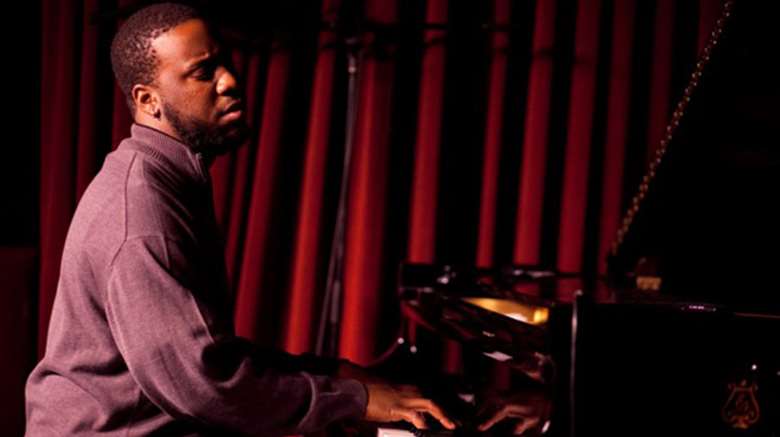Robert Glasper Trio digs deep at The Hub, Edinburgh
Tuesday, August 18, 2015
As the audience waits for the Robert Glasper Trio to take the stage, J Dilla’s instrumental hip-hop classic ‘Donuts’ plays through the P.

A., its intricate play of samples and head-nodding beats a good indication of where the pianist’s head is at right now. The late Dilla, aka James Yancey, is one of many hip-hop, R&B and neo-soul artists Glasper has worked with, and his musical sensibility resonates throughout this acoustic trio set, not least in the drumming of Damion Reid, who plays like a human MPC2000, the iconic drum-machine sampler which Yancey was a virtuoso of. Yancey was renowned for crafting looped beats which retained the feel of real-time drumming; Reid deftly adapts that approach to a jazz context, holding down tight grooves which spread outward as they gain momentum, all while remaining firmly in the pocket. Together with Vicente Archer’s on-point bass playing, Reid’s drumming creates a solid foundation for Glasper’s jazz reinventions of tunes by Prince, D’Angelo and Jhené Aiko: R&B and pop hits he aims to turn into ‘new standards’.
Glasper’s logic here and on his recent album Covered is perfectly sound: the traditional standards were pop hits of their day, so there’s no reason why contemporary songs can’t be vehicles for jazz improvisation too. It’s not simply a case of putting a swing on a pop tune or soloing over the changes: Glasper’s Trio opens up the rhythms as well as the harmonies, not least on their version of his neo-soul song ‘I Don’t Even Care’, where Reid delivers an astonishing take on the painstakingly constructed breakbeats of drum ‘n bass producers like Roni Size and LTJ Bukem, splicing and recombining snare and hi-hat patterns into a rolling and skittering polyrhythmic groove. Glasper plays it cool, letting his lush chords and wistful melodies float over Reid’s fleet of dancing insects. The piece is a stunning example of how acoustic jazz can incorporate the rhythm science of electronic music while maintaining its spontaneity.
The improvisatory quality extends to the show as a whole. Although the venue is a converted Victorian hall, the performance itself has an intimate club feel. Glasper’s relaxed, often comic, interaction with the audience sees him roll out rambling anecdotes about Carly Simon buying him an iPod, goof around with false starts and play the pampered diva (“I need to get into my zone”). As he jokes, he gives brief hotel lobby style renditions of Bruce Hornsby’s ‘That’s The Way It Is’ and Cyndi Lauper’s ‘Time After Time’, sweetly turning the latter into an audience sing-along. Such antics may be designed to make the idea of a jazz show less intimidating, but there’s no doubting Glasper’s chops. ‘In Case You Forgot’ presses the point home, with Glasper’s right hand wandering in multiple directions around an insistent left-hand pattern, which he subjects to microscopic Steve Reich-like variations.
While Glasper’s playing never quite veers into avant-garde abstraction, his extended harmonies and complex rhythms do bear the influence of post-Cecil Taylor players like Matthew Shipp, as well as more obvious reference points like Monk and Herbie Hancock. Like Hancock in his prime, Glasper is exploring the connections between jazz and pop through electric and acoustic bands. It’s all done without apology or compromise: Glasper has at his disposal a deep jazz vocabulary, yet he’s also smart enough to let a good tune be.
– Stewart Smith